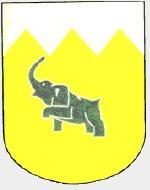Oxford AC004 German Junkers Ju-87B Stuka Dive-Bomber - Stab III./Sturzkampfgeschwader 77, Caen, France, 1940 (1:72 Scale)
"Guns before butter. Guns will make us powerful; butter will only make us fat."
- Reichsmarschall Hermann Goering, Head of the German Luftwaffe
 The Junkers Ju 87 or Stuka (from Sturzkampfflugzeug, "dive bomber") was a German dive bomber and ground-attack aircraft. Designed by Hermann Pohlmann, it first flew in 1935. The Ju 87 made its combat debut in 1937 with the Luftwaffe's Condor Legion during the Spanish Civil War and served the Axis forces in World War II.
The Junkers Ju 87 or Stuka (from Sturzkampfflugzeug, "dive bomber") was a German dive bomber and ground-attack aircraft. Designed by Hermann Pohlmann, it first flew in 1935. The Ju 87 made its combat debut in 1937 with the Luftwaffe's Condor Legion during the Spanish Civil War and served the Axis forces in World War II.
The aircraft was easily recognisable by its inverted gull wings and fixed spatted undercarriage. Upon the leading edges of its faired main gear legs were mounted the Jericho-Trompete (Jericho trumpet) wailing sirens, becoming the propaganda symbol of German air power and the blitzkrieg victories of 1939-1942. The Stuka's design included several innovative features, including automatic pull-up dive brakes under both wings to ensure that the aircraft recovered from its attack dive even if the pilot blacked out from the high g-forces.
The Stuka operated with considerable success in close air support and anti-shipping at the outbreak of World War II. It spearheaded the air assaults in the invasion of Poland in September 1939. Stukas were crucial in the rapid conquest of Norway, the Netherlands, Belgium and France in 1940. Although sturdy, accurate, and very effective against ground targets, the Stuka was vulnerable to contemporary fighter aircraft, like many other dive bombers of the war. During the Battle of Britain its lack of maneuverability, speed and defensive armament meant that it required a heavy fighter escort to operate effectively. After the Battle of Britain the Stuka operated with further success in the Balkans Campaign, the African and Mediterranean theaters and the early stages of the Eastern Front where it was used for general ground support, as an effective specialized anti-tank aircraft and in an anti-shipping role. Once the Luftwaffe lost air superiority, the Stuka became an easy target for enemy fighter aircraft on all fronts. It was produced until 1944 for lack of a better replacement. By the end of the war ground-attack versions of the Focke-Wulf Fw 190 had largely replaced the Stuka, but Stukas remained in service until the end of the war.
An estimated 6,500 Ju 87s of all versions were built between 1936 and August 1944.
Pictured here is a 1:72 scale replica of a German Junkers Ju-87B Stuka dive-bomber that was attached to Stab III./St.G.77, then deployed to Caen, France, during 1940.
Sold Out!
Dimensions:
Wingspan: 7-1/2-inches
Length: 7-inches
Release Date: June 2011
 Historical Account: "Death from Above" - Flying at 4,600 meters (15,000 ft), the pilot of a Stuka located his target through a bombsight window in the cockpit floor. After opening the dive brakes and slowing his throttle, he then rolled the aircraft 180, automatically nosing the aircraft into a dive. Red tabs protruded from the upper surfaces of the wing as a visual indicator to the pilot that in case of a g induced black-out, the automatic dive recovery system would be activated.
Historical Account: "Death from Above" - Flying at 4,600 meters (15,000 ft), the pilot of a Stuka located his target through a bombsight window in the cockpit floor. After opening the dive brakes and slowing his throttle, he then rolled the aircraft 180, automatically nosing the aircraft into a dive. Red tabs protruded from the upper surfaces of the wing as a visual indicator to the pilot that in case of a g induced black-out, the automatic dive recovery system would be activated.
The Stuka dived at a 60 - 90 degree angle, accelerating to 600 km/h (350 mph). When the aircraft was reasonably close to the target, a light on the contact altimeter came on to indicate the bomb-release point, usually at a minimum height of 450 m (1,500 ft). The pilot released the bomb by depressing a knob on the control column to release weapons and to initiate the automatic pull-out mechanism. A clutch located under the fuselage would swing the bomb out of the way of the propeller, and the aircraft would automatically begin a 6g pullout.
Once the nose was above the horizon, dive brakes were retracted, the throttle was opened, and the propeller was set to climb. The pilot regained control and resumed normal flight. The remaining bombs under the wings were used for other targets.


